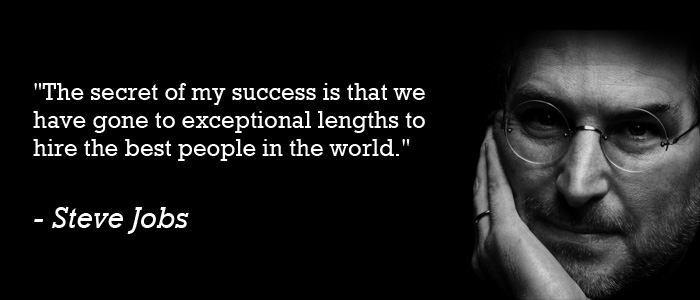
Most of the organizations hire people on the basis that the talent they are hiring is of a high order. This, however, does not become true in all cases of recruitment. There is always an element of uncertainty in the hires. The selections are mainly bases on resume, interviews and traditional selection methods like objective type test, group discussion etc.
There is always a chance that the effort turns out to be a bad hire with adverse repercussions, like low morale, high turnover, and high cost of starting the hiring process all over again.
To avoid this, some of the best practices in hiring which could mitigate the shortfalls in the hiring process are as follows. These are not totally afresh or de novo but are practised by some leading organizations or the other.
Think ahead
A new employee needs to be part of the long-term corporate HR strategy- and if you can visualize where you want to be in the next few years, it will be significantly more natural to see how a new employee fits into the matrix. This necessitates crafting a well-defined, future- oriented job description, which can be the single important step that begins the hiring process and makes it simpler, from start to finish. And down the road when the new hire shows up, they have clear-cut guidelines for what is expected.
Administer Objective Behavioural Testing
It is a set of situation based questions to be answered by group of candidates in same situation, and the decision made from the test results are corroborated with results based on research studies.
This test gives interviewer’s personality perspective of the job candidate, allowing them assesses personal aspects of the individual, such as interpersonal skills, initiative, self-control, and individual’s work ethics. They can determine how the candidate would work in that corporate culture.
Supplement selection test results with criminal background checks and extensive reference check
Background and criminal checks are absolutely essential in the hiring process today for the obvious reasons: workplace safety, “at risk” behaviour, sexual harassment, falsified employment application and negligent hiring lawsuit conduct while on duty.
For background check, performance assessments report if the previous organizations are ready to disclose. Extensive reference check may seem obvious, but get in touch with their previous bosses and colleagues in a discrete manner.
Direct sourcing and employee referrals
It usually contributes majority of the total hires. So, set up a program that rewards current employees for referring an apt job candidate. People within the organisation can recognise others who would fit in well, and are unlikely to choose someone who wouldn’t pull their weight.
On campus student ambassador program
This practice would increase brand awareness in coveted market of 18 to 24 years old. It can create brand loyalty since this age group is a receptive audience. One of the approaches, which companies use, is engaging the summer interns as ambassadors once they return to campus. Firms like Google, Microsoft and Qualcomm have found their ambassadors to be highly effective.
Develop the capability of recruiting remotely (without visiting the campus)
This practice is important due to two reasons. One is not missing out on a bright student from not so well known campus/ remote campus. And second one is locking in the best students before pre placement talks.
Apart from these practices there are various other innovative practices of hiring or recruitment used in various organisations.
Assessment Centres or Selection centres
Selection centres consist of a number of exercises designed to assess the full range of skills and personal attributes required for the job. They are one of the most reliable methods of assessing candidates. Various combination of activities used in assessment centre are Group activities, role play, In-tray / e-tray exercises, presentations, Case studies, Psychometric testing and, Social activities.
Interviews, or any other method, taken alone, may be as low as 15% accurate. However, when scores from a number of different selection exercises are combined, their accuracy can rise to over 60%. They are generally accepted as a fair method of selection, providing equal opportunities for all candidates and selecting on merit. They assess what candidates will actually do if selected not just how good they are at interview.
Gamification
Increasingly, companies are using video games to recruit employees. This strategy also increases brand awareness and it can introduce your company to applicants.
Marriott International, a hospitality company, Mitre Corp., an engineering and technology services corporation and Deloitte Touche Tohmatsu, China has adopted video game method for attracting talent. Players take a self-guided virtual tour of the company’s workplace, meeting rooms and training centres that resemble those in the actual offices. Players are even encouraged to “chat” with current employees to get a better sense of the company culture and goals.
Puzzle, Challenges and Contests
Puzzles, challenges and contests can bring out the best in possible applicants. The promise of competition and the chance at a prize will attract ambitious and hardworking individuals. In addition to drawing in possible applicants through the pool of contestants, this type of event brings positive energy and publicity to your company and attracts a plethora of onlookers who are interested in the subject and could, too, be beneficial to get to know.
For example most companies use puzzle, challenges and contests to recruit outside talent, but MGM Grand Hotel & Casino in Las Vegas held a competition to discover hidden internal talent.
Go Undercover
This practice can better be explained with a practical example practiced by First Merit Bank. Companies often send recruiters to job fairs, colleges and networking events, but First Merit Bank finds talent in more innovative locations. Recruiters often patrol retail stores and seek out those with the best customer service skills. Though the recruits might not have experience in banking, they’re pursued because of their customer service skills, which can be applied to various industries.
Not all of these techniques are going to be a good fit for every business as there is no “one-size-fits-all” for recruitment strategies. To be effective you have to identify where your current recruitment strategies are lacking, what resources are available, and, finally, determine exactly what kind of person you need at your company.
DEEPAK BHARARA – CHRO LANCO INFRATECH LIMITED
- November 14, 2016
- Posted by: Deepak Bharara
- Category: Best Practices

